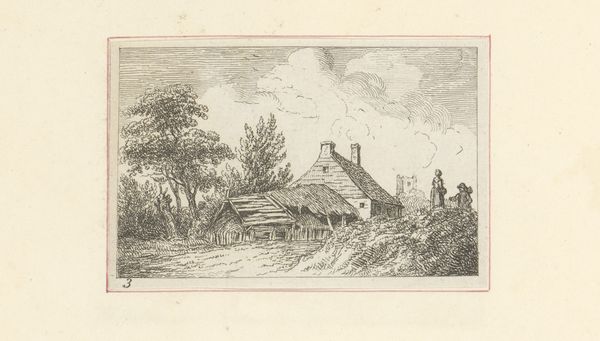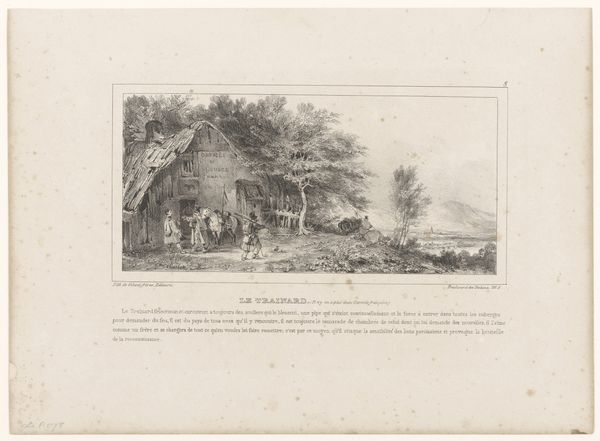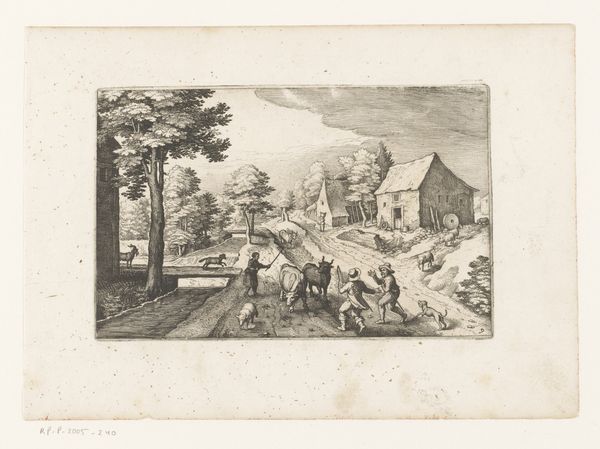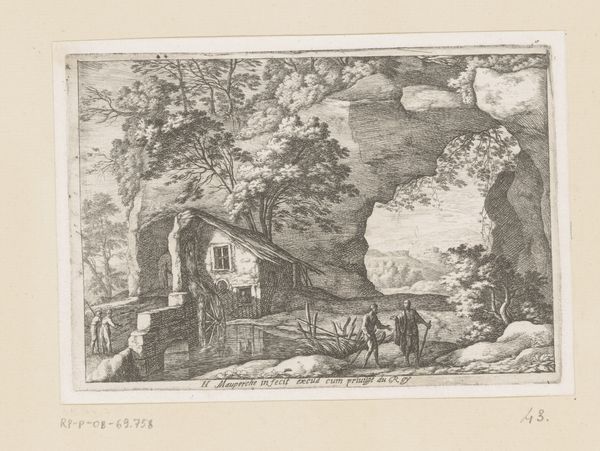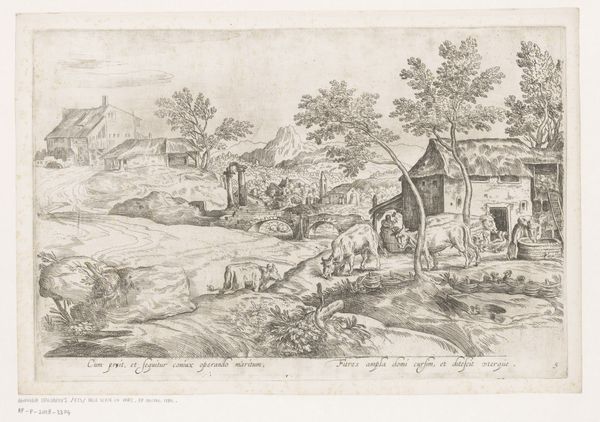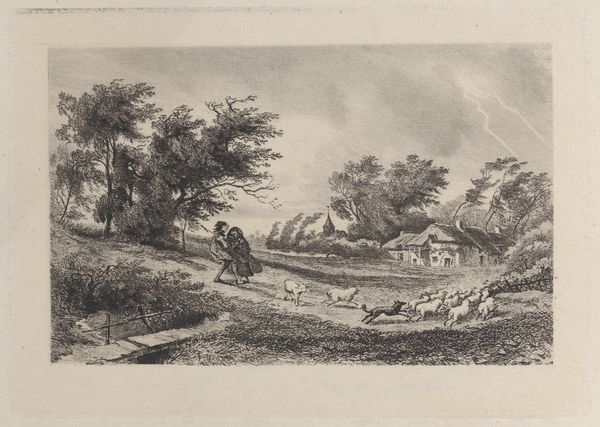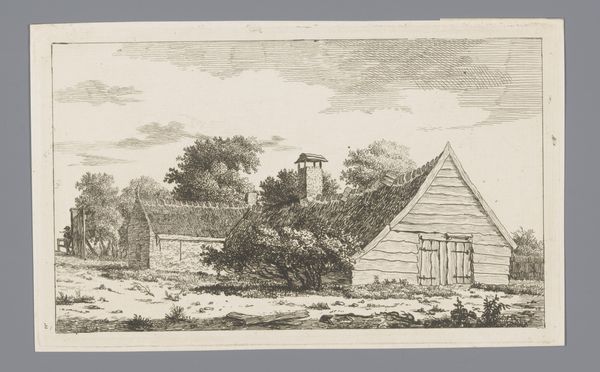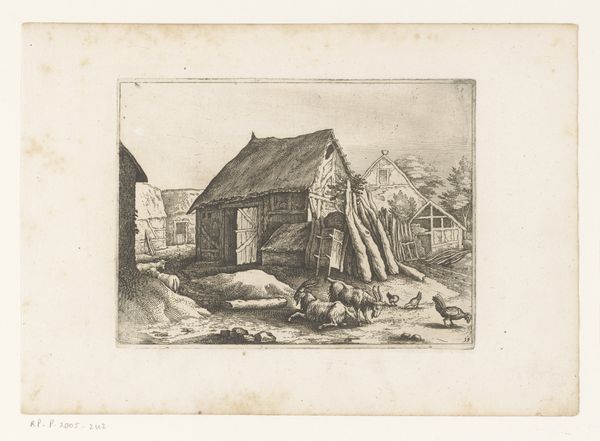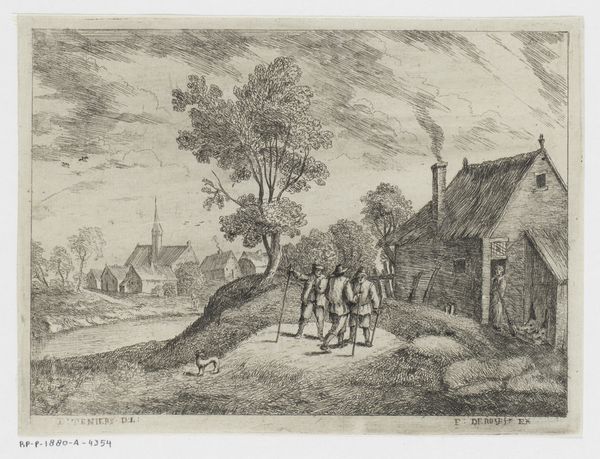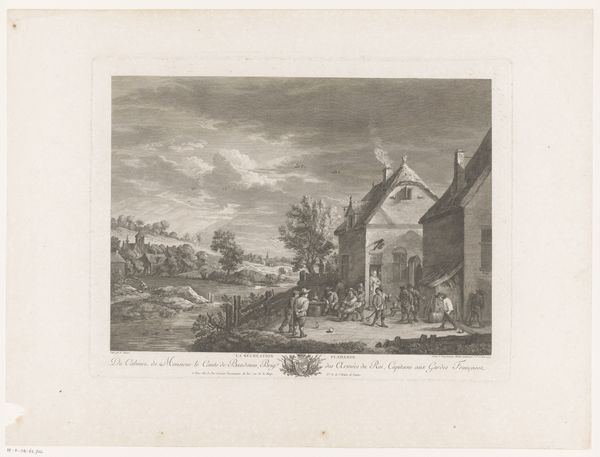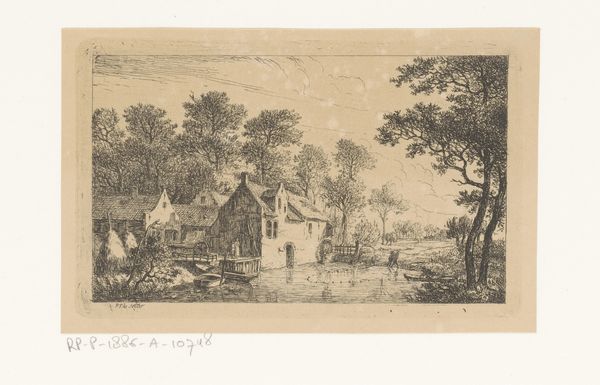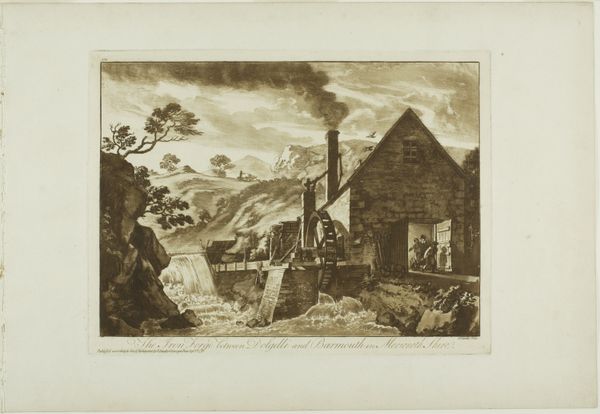
Dimensions: height 251 mm, width 377 mm
Copyright: Rijks Museum: Open Domain
Curator: At first glance, the wintry scene seems quaint, almost idyllic. Is that smoke rising from the chimney? There’s such detailed rendering in the foreground that gives way to these tiny figures skating. It reminds me a little of Breugel, perhaps because of that high horizon. Editor: And that frozen lake certainly pulls your eye toward the background. Well, what we're looking at is “Figures on a Frozen Lake Near a Farmhouse” from around 1760, an etching by Franz Edmund Weirotter, now in the collection of the Rijksmuseum. It immediately prompts me to consider the material conditions of printmaking during that era, its accessibility. Curator: A perfect point. The relative ease of producing and distributing etchings allowed these kinds of genre scenes, like the everyday depiction of figures enjoying the winter, to circulate among a wider public. How does this contrast with the patronage system of the time? Editor: Precisely. Etchings were crucial in shaping public perception of landscapes and daily life, serving a burgeoning market beyond the aristocratic elite, who commissioned grander paintings. Here, Weirotter capitalizes on this shift, offering a slice of life for a broader, consumer-oriented audience. Think about the materiality itself—the paper, the ink, the etched copper plate. These were relatively cheap. Curator: What interests me here is how the landscape becomes a stage. People aren't simply occupying space; they’re actively engaging in leisure, in labor... how that shared frozen surface almost democratizes that interaction. It’s a beautiful, if possibly idealized, rendering of peasant life, isn't it? Editor: Ideals and aspirations are commodities too. This image isn’t merely descriptive, it’s persuasive. The clean lines of the etching emphasize efficiency, control—suggesting the promise and perhaps the potential of landscape itself to be rendered as goods, and that Weirotter, operating as both creator and manufacturer, takes on a new role. This little print embodies so much of what defined its time! Curator: Agreed. Looking closer, one could also trace how "Romantic" notions start to take hold in landscape—even genre scenes like this. This print hints toward larger cultural shifts occurring. Editor: That’s such an interesting thread to weave in—from process to consumption to shifting aesthetics, it definitely shows how so much is possible when you start to unravel such what at first glance looks like just a pretty little print. Curator: Definitely given me a new way of seeing it!
Comments
No comments
Be the first to comment and join the conversation on the ultimate creative platform.

